
Unlocking the full potential of a modern cross country full suspension bike is an art. A frame like the Trifox Trail II Pro offers a lightweight, stiff carbon platform designed for efficiency, but its rear shock needs precise tuning to match. A poorly tuned shock can make even the best double suspension mtb feel harsh or wallowy. This guide will help you sync your shock with your frame's personality for a ride that’s both fast and forgiving. Step 1: Foundation – Setting Sag and Leverage Rate Every setup begins with sag—the amount your shock compresses under your weight in a neutral riding position. For an XC-focused frame, aim for 20-25% sag. This balances pedaling efficiency with bump absorption. Why it matters for carbon frames: Carbon’s high stiffness translates pedal input directly. Correct sag ensures the suspension is in its optimal part of the stroke to react to trails without wasting energy. Pro Tip: Know your frame's leverage ratio. The Trail II Pro is designed with a specific progressive or linear curve. Check the manufacturer's guide; this tells you how the shock feels through its travel. A progressive frame (common in modern designs) helps prevent bottoming out on big hits. Step 2: Controlling the Motion – Rebound Damping Rebound damping controls how quickly the shock returns after compression. This is crucial for maintaining traction. Too Fast: The bike feels springy and can "kick back," losing tire contact. Too Slow: The shock "packs down" over successive bumps, feeling harsh and reducing travel. Setting Rebound: 1. Set sag correctly first. 2. Find a bumpy trail or series of curb drops. 3. Start with rebound fully open (fast). Ride and gradually add clicks (slow it down). The Goal: The rear wheel should recover quickly enough to handle the next bump but not so fast it causes the bike to bounce. The rear should feel "calm" and controlled. Step 3: Refining the Feel – Compression Damping Compression damping controls how the shock compresses under force. Most XC shocks have low-speed compression (LSC) for pedaling/platform support. LSC Tuning: Start with LSC fully open. On a smooth climb or while pedaling hard on flat ground, add clicks until you feel a noticeable reduction in unwanted bob without making the ride feel harsh over small bumps. The goal is a firm, efficient platform that still remains active. The Critical Link: Frame Bushing & Bearing Care Your tuning is only as good as the mechanical connection between the shock and frame. Friction from dry or worn pivots destroys sensitivity. The Trifox Advantage: The Trail II Pro includes a set of premium 190x18mm and 190x19mm replacement bushings, compatible with major shocks from Fox and RockShox. This ensures you always have a perfect-fit, low-friction interface on hand. Maintenance: Regularly check pivot bolts for proper torque (use a torque wrench!). Annually, or if play develops, inspect bushings and bearings for wear. A well-lubricated, slop-free pivot system allows your finely tuned shock to perform exactly as intended, translating every damping click into a tangible trail feel. Final Tune: Match Shock to Frame Intent Understand your frame's design goal. The Trail II Pro is a lightweight XC race machine. Prioritize a setup that favors: Efficient climbing (firmer LSC, proper sag). Traction and control on technical, rocky ascents (balanced rebound). Confidence on descents (enough progression and damping to handle drops). Don't be afraid to make small adjustments and test. Terrain changes, and so should your setup. Start with manufacturer base recommendations, then use this guide to personalize. When your shock’s dynamics are in harmony with your carbon frame's stiffness and geometry, you’ll experience the true synergy of a modern cross country full suspension bike—where every watt of effort propels you forward, and every trail feature is an opportunity, not an obstacle.

Your bike computer is your command center, delivering vital data on speed, distance, and navigation. But if it’s angled poorly, you’ll be squinting, straining your neck, or taking your eyes off the trail for too long. Achieving the perfect angle is a simple yet transformative adjustment that enhances comfort, safety, and your connection to the ride. Here’s how to dial it in for any discipline. Start with a Proper Mount Before fine-tuning the angle, you need a solid and adaptable foundation. A high-quality mount, like the Trifox STH300, is essential. This isn't just alloy; it's the interface between your handlebar and your valuable device. Look for features that promise stability and versatility: Secure Attachment: A robust clamp system that locks onto your handlebar without slippage, even on rough trails. Adjustable Angle Mechanism: The core feature that allows you to fine-tune the tilt. A simple, tool-free lever or dial is ideal for on-the-fly adjustments. Universal Compatibility: Ensure it fits your specific handlebar diameter and your computer’s mounting standard (e.g., Garmin, Wahoo). A mount like the Trifox STH300 provides this reliable base, allowing you to focus on finding your optimal view. Finding Your Angle: Road vs. Mountain Bike Principles The “correct” angle isn’t a single number; it’s dictated by your riding posture. For Road & Gravel Riding (Aggressive Posture): When you’re in the drops or an aero tuck, your line of sight is lowered. Tilt the computer face slightly upward. This brings the screen perpendicular to your natural sightline, minimizing glare and making data easy to read without lifting your head. A good starting point is having the screen face roughly toward your chin when in your primary riding position. For Mountain Biking & Upright Positions: On a trail bike or hybrid, your posture is more upright. The screen should be closer to level with the ground or tilted only very slightly upward. This prevents the display from being obscured by the handlebar or your hands and ensures quick glances for navigation or timer data. The key is to maximize the visible screen area from your higher vantage point. The Simple Setup Method: The On-Bike Test Forget protractors. Use this practical method: 1. Clip into your bike on a stationary trainer or have a friend hold you upright. 2. Assume your primary riding position—whether that’s in the hoods, drops, or a ready mountain bike stance. 3. Close your eyes, then naturally open them and look where your gaze falls. 4. Adjust the computer angle so the screen is facing directly into this natural line of sight. Your neck should feel neutral, not craned up or down. Pro Tips for Precision & Safety Prioritize a Clear View: The screen should be completely visible, not blocked by cables, a bicycle light mount, or your hands. If you use a combined mountain bike computer mount and light bracket, position them so both devices have an unobstructed field of view. Minimize Glare: Tilt the screen to avoid direct reflections from the sun or bright sky. A slight adjustment can make the difference between an illegible glare and a crisp display. Ensure Stability: After setting the angle, check all fasteners. The computer should not wobble or vibrate, as this distracts and can lead to damage on rough terrain. Safety Check: Before every ride, give the computer a gentle tug to confirm it’s locked securely into its mount. The last thing you need is for it to detach on a fast descent. Why the Perfect Angle Matters Spending a few minutes on this adjustment pays dividends: Enhanced Safety: Quick, effortless glances keep your focus on the path or traffic ahead. Reduced Fatigue: A neutral neck and eye position prevent strain on long rides. Better Data Utility: When you can see your metrics clearly, you can use them effectively to pace your effort or follow a route. Your bike computer should feel like a natural extension of your cockpit, not an awkward addition. By investing in a versatile, adjustable mount and taking the time to set the angle for your unique riding style, you unlock a smoother, safer, and more connected cycling experience. Look down with ease, and look ahead with confidence.
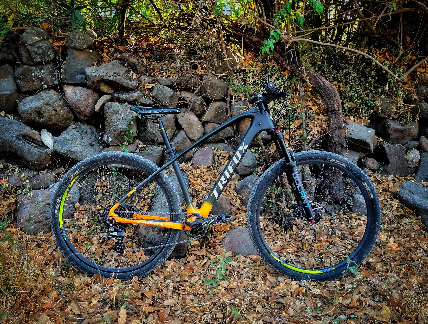
Building a mountain bike from the frame up is one of the most rewarding experiences for any cycling enthusiast. The process allows complete customization and creates a machine that perfectly matches your riding style, local trails, and component preferences. The TRIFOX MFM200 Carbon MTB Hardtail Frame serves as an exceptional foundation for such a project, offering not only modern geometry and lightweight carbon construction but also remarkable versatility in wheel compatibility. Choosing the Right Size: From 17 to 19 Inch Frame Options The MFM200 is thoughtfully designed to accommodate riders of various heights, with popular 17 inch bike frame and 19 inch bike frame options. For many enthusiasts, the medium bike frame represents an optimal balance, making it a competent trail bike frame foundation for everything from fast cross-country to technical terrain. Versatile Wheel Compatibility: Convertible Dropout System A standout feature of the MFM200 is its innovative dropout system. The frame natively uses a robust 142mm thru-axle configuration for optimal stiffness and alignment. Crucially, by replacing the thru-axle dropout with an optional quick-release dropout, the frame seamlessly converts to a 135mm quick-release system. This convertible dropout design offers unparalleled flexibility, allowing you to choose between modern performance or legacy component compatibility for your trail bike build. Frame Characteristics: Modern Performance Meets Timeless Design While engineered with contemporary performance in mind, the MFM200 retains a clean, purposeful aesthetic that many consider a classic bike frame silhouette. Its full carbon construction delivers high stiffness-to-weight ratio and vibration damping. Internal cable routing contributes to a sleek appearance and protects components, making it a compelling centerpiece for a custom mtb. Building the Foundation: Drivetrain and Brakes The frame is ideally suited for modern 1x drivetrains and features flat-mount disc brake tabs for clean integration with high-performance hydraulic systems. This modern braking standard offers consistent, powerful modulation in all conditions, a critical safety and performance upgrade for your mountain bike build. Suspension Fork Selection & Cockpit Personalization As a hardtail, selecting the right fork (120-150mm travel) is key to unlocking the frame's potential. Ensure it has a tapered steerer tube for optimal stiffness. The contact points—handlebar, stem, and saddle—are where the bike becomes uniquely yours. Strongly consider a dropper seatpost, which the frame's internal routing supports, for a major boost in descending confidence and control. Conclusion: Your Vision, Realized Building a bike around the TRIFOX MFM200 is an exercise in creation. From selecting the perfect frame size to utilizing its unique convertible dropout feature, every decision shapes a machine that reflects your priorities. Whether your goal is an XC racer or a trail explorer, the MFM200 provides a versatile, high-performance carbon foundation for your perfect thru-axle frame that can also adapt to quick-release compatible wheels.

Building your dream mountain bike from the ground up is one of the most rewarding experiences for any cyclist. It allows for complete customization, ensuring every component is perfectly tailored to your riding style and local trails. If you're aiming for a modern, capable, and efficient 29er, starting with a high-quality carbon hardtail frame like the Trifox Carbon Hardtail Frame (SDY21) is the perfect foundation.Step 1: The Heart of the Build - Choosing the Right FrameThe frame is the soul of your bike, dictating its geometry, ride quality, and component compatibility. For a dream 29er mountain bike, a carbon hardtail frame is an excellent choice. It offers an ideal blend of lightweight performance, stiffness for efficient power transfer, and inherent vibration damping for better comfort on rough trails. A frame like the Trifox SDY21 features modern standards like Boost spacing for stiffer wheels, a tapered head tube for enhanced steering precision, and internal cable routing for a clean appearance.Step 2: Selecting the Wheelset and DrivetrainThe wheels are your bike's connection to the trail. For a 29er build, you benefit from superior rollover capability over obstacles, helping to maintain momentum. Pair your frame with a sturdy, yet lightweight, wheelset that matches the Boost hub spacing. For the drivetrain, the modern standard is a 1x (single front chainring) setup. It's simpler, lighter, and eliminates the risk of chain drops. Combine a narrow-wide chainring with a wide-range 12-speed cassette to give you all the gear range you need for any terrain.Step 3: Dialing in Control with Suspension and CockpitSince you're building a hardtail mountain bike, your suspension comes entirely from the fork. A quality air-sprung fork with 120mm-130mm of travel is a versatile choice for most trail riding. Ensure it has a tapered steerer to match your frame's head tube for optimal stiffness. Your cockpit—the handlebar, stem, and seatpost—is your control center. A 35mm diameter handlebar and stem combo offers robust stiffness, while a dropper post is a game-changing upgrade for confident descending on your custom 29er build.Step 4: Ensuring Stopping Power and Finishing TouchesModern trails demand powerful brakes. Hydraulic disc brakes are essential, and the frame provides post-mount compatibility for a clean installation. Choose rotor sizes that match your aggression and trail demands. Finally, select the finishing kit: a comfortable saddle, reliable pedals (flat or clipless), and durable tires that suit your typical terrain. These components personalize the bike and complete your MTB project build. Why the Trifox SDY21 Frame is the Ideal FoundationBuilding around a carbon 29er frame like the Trifox SDY21 sets your dream build up for success. Its full carbon fiber construction provides the perfect blend of low weight, vibration damping, and pedaling efficiency. The internal cable routing creates a clean, snag-free appearance and protects the cables from the elements. This frame is designed for the rider who appreciates a direct, engaging trail feel and wants a bike that is both a capable climber and a fun, agile descender.Your Dream 29er AwaitsBuilding a bike around a carbon hardtail frame is a deeply personal and satisfying process. You gain an intimate understanding of your machine and create a ride that is uniquely yours. By carefully selecting each component to match this high-quality frame, you will craft a lightweight hardtail mountain bike that is ready to conquer trails and provide endless smiles for years to come. Start your build journey today and experience the ultimate in customization and performance. Learn how to build your ultimate 29er mountain bike using the Trifox SDY21 carbon hardtail frame as your foundation. This guide walks you through selecting the perfect wheelset, a modern 1x drivetrain, the right suspension fork, and key components to create a lightweight, high-performance hardtail MTB tailored to your local trails.

Embarking on the journey to build your dream cross-country (XC) mountain bike is an exciting endeavor. At the heart of this project lies the most critical decision: selecting the perfect frame. A 29er XC full suspension carbon frame represents the ultimate fusion of speed, efficiency, and control, designed to conquer demanding trails while remaining lightweight and responsive. But with a myriad of options available, how do you ensure you're making the right choice? This comprehensive guide will walk you through the essential factors to consider, using the exemplary TRIFOX Trail II Pro Full Suspension Carbon MTB Frame as a benchmark for what a top-tier frame should offer. 1. Geometry: The Blueprint of Performance The geometry of a frame is the DNA of your bike's handling characteristics. For modern XC and downcountry riding, the goal is a blend of aggressive climbing efficiency and confident descending stability. Head Tube Angle (HTA): A slacker HTA boosts stability on technical descents. The TRIFOX Trail II Pro features a 67.5-degree head angle, which is progressive for an XC frame, providing increased confidence when the trail turns downward. Seat Tube Angle (STA): A steeper STA positions the rider optimally over the bottom bracket, enhancing climbing efficiency and power transfer. The Trail II Pro's 75.5-degree seat angle ensures you can tackle steep climbs effectively. Reach and Stack: These measurements define your cockpit space and riding posture. Modern geometries tend toward longer reach and lower stack for improved stability and a more aerodynamic riding position. Why it matters: The right geometry ensures the bike feels intuitive and responsive. The Trail II Pro's geometry strikes a perfect balance, making it adept at both winning races and tackling technical trail features. 2. Suspension Design: The Heart of the Ride A full-suspension XC bike must offer traction and comfort without compromising pedaling efficiency. The design of the suspension linkage is paramount. Linkage Type: The TRIFOX Trail II Pro employs a highly efficient four-bar suspension system. This design is renowned for its ability to minimize pedal bob, ensuring that your energy is directed into forward momentum rather than being absorbed by the suspension. Travel: For XC purposes, 35-45mm of rear travel is the gold standard. It provides sufficient absorption for rough terrain and maintains grip without sacrificing the snappy, efficient feel essential for climbing and acceleration. The Trail II Pro is designed around this ideal 35-45mm of travel. Anti-Squat and Kinematics: Advanced suspension kinematics with high anti-squat values keep the frame taut under power, translating to efficient pedaling—a non-negotiable trait for any serious XC frame. 3. Carbon Fiber Quality: Where Engineering Meets Art The grade and construction of the carbon fiber directly influence weight, stiffness, compliance, and overall durability. Carbon Grade: Look for frames utilizing high-modulus carbon fibers. The TRIFOX Trail II Pro is crafted from T800 carbon fiber, a premium material that allows for an exceptional strength-to-weight ratio. This results in a frame that is both incredibly light and impressively robust. Layup Process: The artistry of carbon frame building lies in the layup. Precision hand-laying allows engineers to tailor the flexibility and stiffness in specific areas. The down tube and bottom bracket can be reinforced for stiffness and power transfer, while the seat stays can be designed to offer vertical compliance, smoothing out trail vibrations. Why it matters: A high-quality carbon frame like the Trail II Pro delivers a ride quality that is stiff and responsive when you stamp on the pedals yet surprisingly comfortable over long, rugged distances. 4. Modern Features and Compatibility: Future-Proofing Your Investment A modern frame must adhere to current component standards to ensure compatibility and ease of upgrades. Dropper Post Compatibility: The ability to run a dropper post is essential for modern trail riding. The Trail II Pro features internal routing for a 30.9mm dropper post, allowing for a clean setup and confident descending. Boost Spacing: The frame boasts 148x12mm Boost rear spacing and 110x15mm front spacing. This standard increases wheel stiffness, improves tire clearance, and enhances overall handling precision. Threaded Bottom Bracket: A BSA threaded bottom bracket is a signature feature of a well-thought-out frame. It is renowned for its reliability, ease of maintenance, and resistance to creaking—a common issue with press-fit systems. Internal Cable Routing: Full internal routing for derailleur and dropper posts not only creates a sleek, aesthetic look but also protects the cables from dirt and damage. 5. Weight and Value Proposition The pursuit of lightness is central to XC. The TRIFOX Trail II Pro frame weighs approximately 1272g-1336g, placing it firmly in the competitive range for high-performance carbon frames. When evaluating price, consider the value offered by direct-to-consumer brands like TRIFOX, which provide cutting-edge technology and materials at a fraction of the cost of many major brands. Conclusion: The TRIFOX Trail II Pro – A Paradigm of Intelligent DesignSelecting the perfect frame is a process of matching your riding ambitions with engineering excellence. By focusing on geometry, suspension design, carbon quality, and modern features, you can make an informed decision that will define your ride for years to come. The TRIFOX Trail II Pro 29er XC Full Suspension Carbon Frame emerges as a standout option that exemplifies these principles: Its modern geometry inspires confidence across diverse terrain. The efficient four-bar suspension delivers traction without compromise. The T800 carbon construction offers a sublime blend of lightness and strength. Its future-proof features ensure compatibility with the best components on the market. By using this guide and the Trail II Pro as a reference, you are equipped to choose a frame that will form the foundation of an exceptional mountain bike, ready to push the limits of speed and performance.
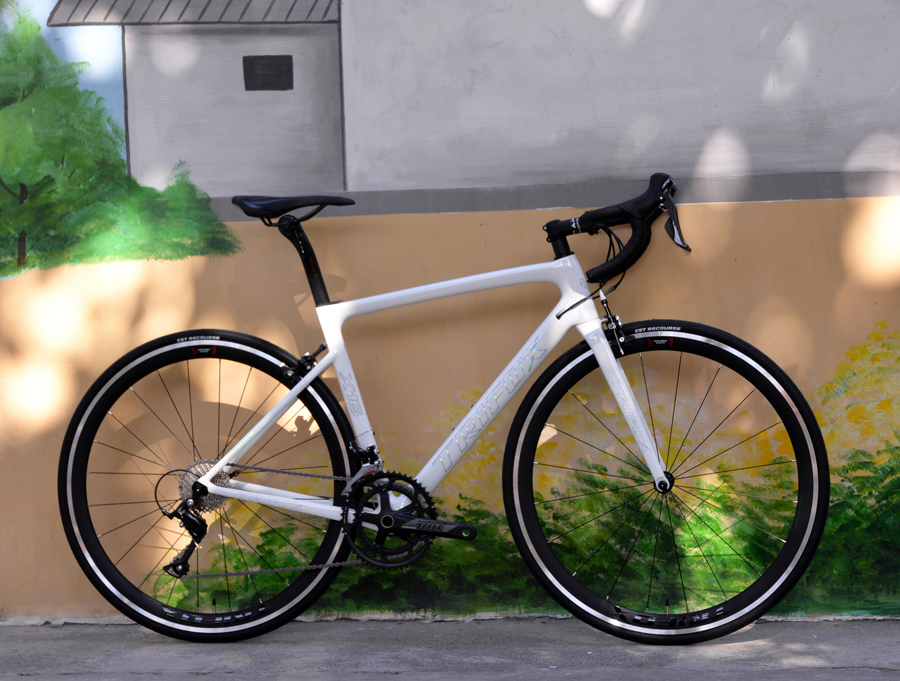
Imagine slicing through headwinds, floating up climbs, and feeling every pedal stroke ignite instant acceleration. This isn’t fantasy—it’s the reality of riding an ultra-light road bike. When your entire machine weighs less than a weekend grocery haul, every aspect of cycling transforms from effort to exhilaration. Why Ultra-Light Matters: 1. Climbs Become Conquests: Shedding weight is the ultimate climbing hack. A lighter frame demands less energy to defy gravity, turning grueling ascents into rhythmic, rewarding efforts. You’ll crest hills faster—and smile wider. 2. Explosive Acceleration: Stop-and-go traffic? Sprint segments? Ultra-light bikes leap forward with minimal input. The reduced mass means near-instant response to power, making surges feel effortless and races decisive. 3. Agile Handling: Cornering tight descents or navigating technical routes becomes intuitive. A featherweight frame dances beneath you, offering surgical precision and confidence at high speeds. 4. Endurance Boost: Less weight = less fatigue. Ride longer, push harder, and finish strong without the dead-legged feeling of hauling excess mass. The Trifox Difference: The 700c Carbon Fiber Ultra-Light Road Bicycle isn't just light—it's intelligently engineered. Its monocoque carbon frame blends minimal weight with optimized stiffness, ensuring zero power loss on sprints or climbs. Paired with aerodynamic tube shaping and compatibility with high-end components, it delivers pro-level performance without the pro-level price. Who It's For: Climbers: Conquer grades you once walked. Racers: Gain seconds where they matter most. Endurance Riders: Cover miles with leftover energy. Upgraders: Feel your first true "race bike" epiphany. Ready to Redefine Your Limits? An ultra-light bike isn't an upgrade—it's a revelation. The Trifox 700C rewrites your relationship with the road, turning struggle into flow and effort into euphoria.
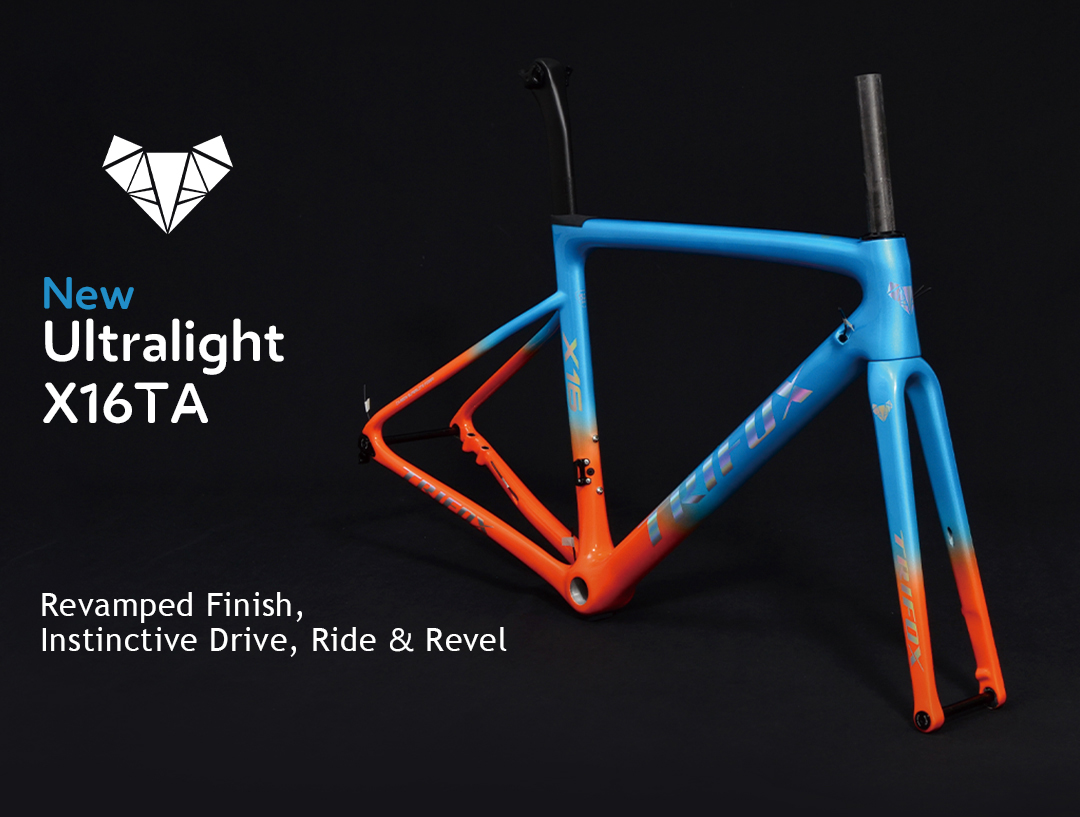
Forget marginal gains – shedding significant weight from your bike's core fundamentally revolutionizes your experience. A super light frame isn't just a number; it's the key to unlocking a new dimension of riding. The most dramatic transformation? Climbing. Less mass means defying gravity requires drastically less effort. Every pedal stroke feels more efficient, translating directly to faster ascents and reduced fatigue. Hills become challenges to relish, not dread. You accelerate quicker, maintaining momentum with newfound ease. But the magic extends beyond going up. A lightweight frame enhances handling profoundly. It's more responsive to steering inputs, making cornering sharper and more intuitive. The bike feels like an extension of your body, dancing beneath you with agility. This flickability boosts confidence on descents and technical sections. Acceleration is where a super light frame truly shines. Whether launching from a stop sign or surging out of a corner, the reduced inertia means the bike leaps forward with minimal effort. It feels eager, alive, translating your power into speed instantaneously. You spend less energy overcoming inertia and more maintaining exhilarating velocity. The overall ride feel becomes exhilaratingly direct. Road buzz and minor imperfections are communicated, but the frame's stiffness (often inherent in lightweight designs like carbon) ensures power transfer is immediate and precise. You feel connected, efficient, and incredibly fast. Experience this transformation: Ready to feel the climb vanish and the road come alive? The Trifox X16TA Disc Brake Lightweight Carbon Road Bike Frame embodies this revolution. Engineered for minimal weight and maximum performance, it's the foundation for your fastest, most responsive ride yet. Discover how a super light frame changes everything: Less weight, more ride.
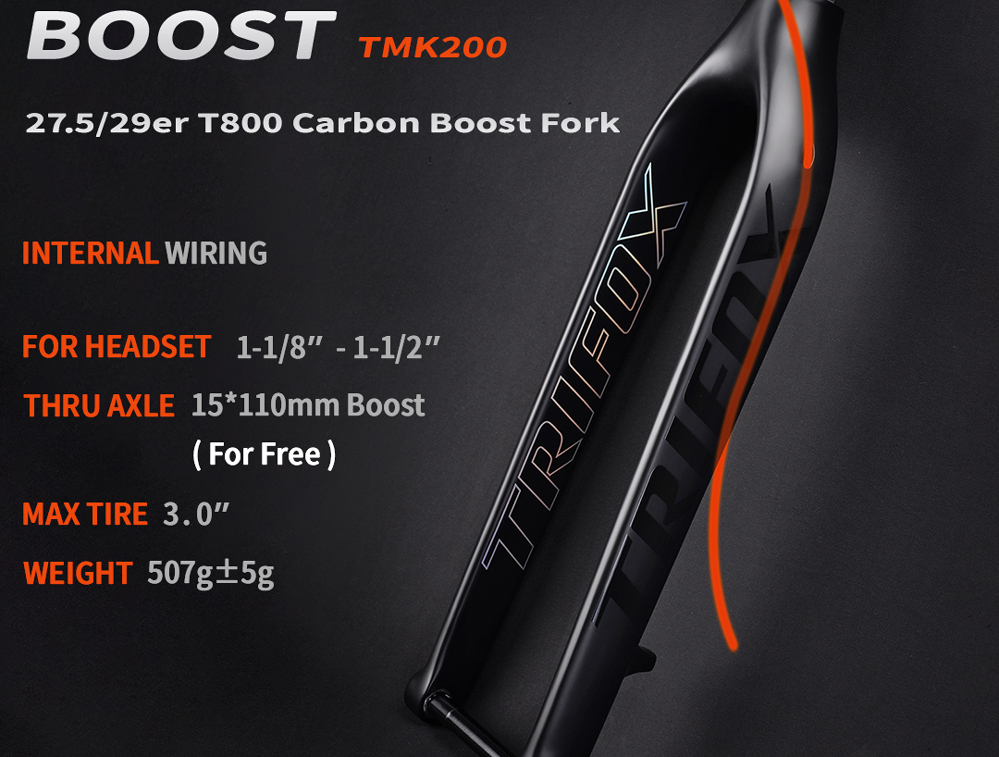
The 27.5" trail bike strikes a legendary balance: agile enough for tight corners, stable enough for chunk, and playful everywhere. But for years, a critical component often held them back – the fork. Enter high-modulus wonders like the Trifox T800 Carbon Boost Fork, fundamentally changing the game for 27.5" riders seeking pure trail performance. The Weight Revolution: Traditional alloy or lower-grade carbon forks add significant heft up front. T800 carbon fiber, renowned for its exceptional stiffness-to-weight ratio, slashes grams dramatically. Forks like the Trifox TMK200 tip the scales around a mere 450g. This unsprung weight reduction is transformative: your 27.5" bike becomes noticeably nimbler, accelerates faster, and flicks through technical sections with telepathic responsiveness. Climbing feels less of a chore as the front end stays light and precise. Stiffness Meets Trail Agility: Weight savings mean nothing without control. T800 carbon delivers incredible torsional and lateral stiffness. Paired precisely with the Boost 110x15mm thru-axle standard, this fork eliminates flex under hard cornering or braking. Your 27.5" wheels track exactly where you point them, inspiring confidence through loose berms and off-camber roots. Power transfer is direct, making every pedal stroke count. This stiffness isn't harsh; modern carbon layups absorb high-frequency trail buzz beautifully, enhancing control without sacrificing comfort on long descents. Optimized for the Platform: The 27.5" wheel thrives on quick handling and maneuverability. A rigid carbon fork like this amplifies those traits. Without suspension bobbing or diving, you get pure, unadulterated feedback from the trail. Steering input is immediate, fostering a deeply connected, "ride the tire" experience that sharpens skills and heightens fun. The tapered steerer tube ensures precise handling and integrates seamlessly with modern frames. Plus, the Boost spacing allows clearance for wider 27.5+ tires (often up to 2.8"), adding versatility for different terrains. Durability & Simplicity: 文字 High-quality T800 carbon isn't just light and stiff; it's incredibly strong and fatigue-resistant. Rigid forks also ditch complex suspension components – no seals to service, no oil to change, no air springs to tune. It's maintenance simplicity defined, offering reliable performance ride after ride with minimal fuss. Disc brake specific (flat mount or post mount) ensures powerful, consistent stopping power. The Verdict: For 27.5" trail riders prioritizing agility, efficiency, and a pure connection to the trail, the T800 Carbon Boost fork isn't just an upgrade; it's a revelation. It unlocks the platform's inherent playfulness by shedding weight, boosting stiffness, and delivering unmatched precision. If you crave a more responsive, lively, and engaging ride from your 27.5" steed, this technology is the key. It transforms your bike into a sharper, faster, and more rewarding partner on every trail.
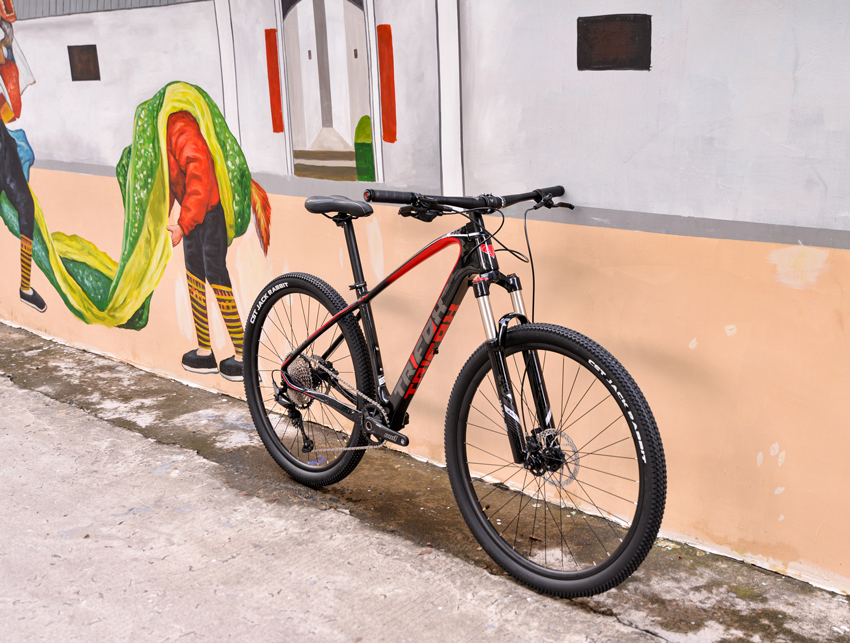
Saddle soreness, numb bits, or aching backs can ruin the joy of cycling. The good news? Discomfort isn't inevitable! Achieving a pain-free ride hinges on proper bike fit, smart positioning, and choosing the right gear. Here’s your guide to sitting comfortably: 1. Find Your Foundation: Saddle Height is Key Heel Method: Sit on the saddle. Place your heel on the pedal at its lowest point. Your leg should be almost straight (slight bend). When pedaling with the ball of your foot, you’ll have a 25-35 degree knee bend. Why it works: Too low strains knees; too high causes rocking hips and saddle pressure. Correct height ensures efficient power transfer and stability. 2. Dial in Fore/Aft Position (Saddle Setback): Your knee should align vertically over the pedal spindle when the crank is horizontal (3 o'clock position). Use a plumb line or have someone check. Why it matters: Incorrect setback overloads hands, shoulders, or perineum, causing pain. 3. Level Your Saddle (Usually!): Start with the saddle perfectly level. Use a spirit level app on your phone. Minor adjustments (1-2 degrees nose down or up) can help, but drastic angles often create new problems. Avoid: Tipping the nose up significantly increases perineal pressure. Tipping it down slides you forward, straining arms and shoulders. 4. Engage Your Sit Bones (Ischial Tuberosities): Sit upright on the saddle’s widest rear section. You should feel your weight firmly on these two bony points – not on soft tissue. Tip: Wear padded cycling shorts ("chamois") to cushion these bones. Regular underwear causes friction and chafing. 5. Maintain a Neutral Spine & Relaxed Upper Body: Avoid rounding or over-arching your lower back. Engage your core slightly. Keep elbows slightly bent, shoulders relaxed and down (not hunched near ears). A stiff upper body transmits shock and causes neck/shoulder pain. 6. Stand Up Regularly! Shift your weight, pedal out of the saddle for 10-30 seconds every 10-15 minutes. This relieves pressure and boosts circulation, preventing numbness. 7. Invest in the Right Saddle: Measure Your Sit Bones: Use cardboard or a memory foam pad to find your sit bone width. Choose a saddle at least 20mm wider than this measurement. Shape Matters: Consider cutouts/relief channels if you experience soft tissue pressure or numbness. Test saddles if possible. 8. Consider Suspension & Dampening: A carbon seatpost, suspension seatpost, or wider tires run at lower pressure can significantly reduce road/trail vibration transmitted to your body. Listen to Your Body & Adjust Gradually: Minor tweaks (1-2mm saddle height, slight tilt) make a big difference. Change one thing at a time and test ride. Some initial discomfort adapting to a correct position is normal, but sharp pain or numbness means STOP and re-evaluate. The Takeaway: Comfort comes from aligning your body correctly on a bike suited to you. Prioritize saddle height, setback, and level. Support your sit bones, stay relaxed, move often, and don’t suffer silently – the right setup feels amazing! If pain persists, consult a professional bike fitter. Ride happy, ride pain-free!

















